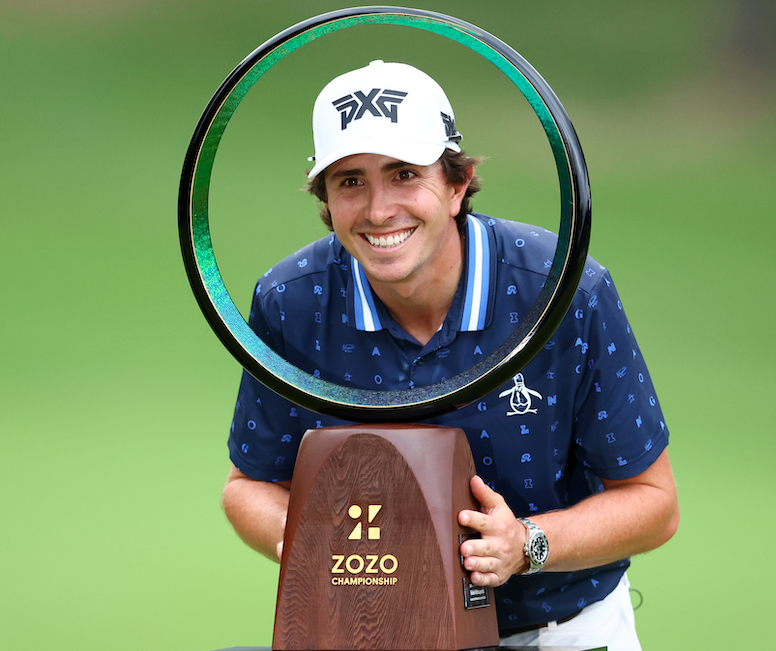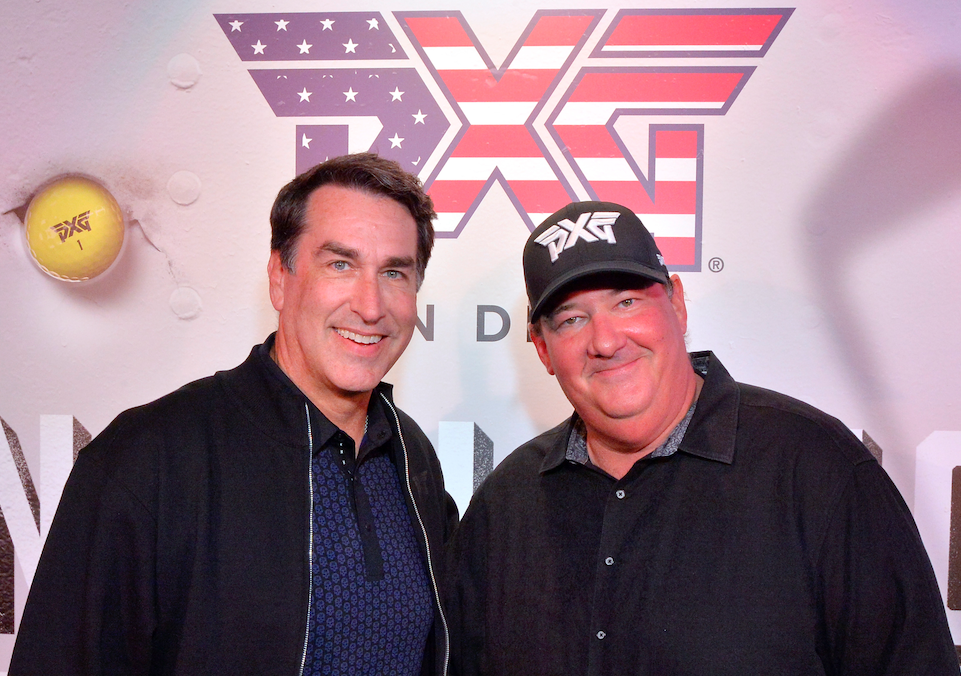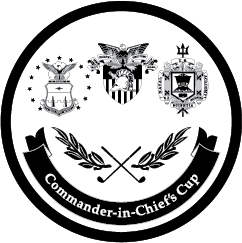
By Guest Contributor Shaun Tolson
With the 2016-2017 PGA Tour season ramping up this month, we sat down with Ryan Moore to discuss—among other things—the World Golf Championships in Mexico City, tips for finding fairways off the tee, secrets to more accurate approach shots, and the finer points of match play strategy.
You’ll be playing in the World Golf Championships in Mexico City next week at a course that isn’t an annual destination on tour. How do you approach an important round at an unfamiliar course?
You might see me playing an extra practice round than I would normally just to see bounces on certain holes and how greens receive shots coming in. It’s just getting on the golf course and getting comfortable with how far the ball is going and the layout and turf conditions. It’s getting my practice done on the golf course instead of at the practice areas.
You finished third at the Valspar Championship last year, which is played at the Copperhead Course, a layout with a challenging final stretch of holes, including the narrow, 443-yard, par-4 18th. What’s your advice for hitting tee shots on challenging and narrow holes like that, especially when playing under pressure?
It’s all about having a go-to shot, a fairway finder. Maybe it’s a low cut or a low draw or taking a 3-wood because you know you’re going to put a better swing on it. You’re basing your decisions on the shots that you’ve hit during that round, too; but it’s choosing a shot that you know that you can hit in that moment. You have to spend time working on that shot on the range. My go-to shot, which is a controlled cut, might be going between 270 and 290 yards, but I know that if I can make that swing I’ll be in the fairway most of the time. And I’d rather hit a 7-iron approach from the fairway than a 9-iron approach from the rough.
Looking ahead to the Bay Hill Championship later this month, do you have any favorite stories or memories of your time spent with Arnold Palmer?
When I played in The Masters for the first time as an amateur in 2003, I was paired with Arnie. It was the second to last time that he played at Augusta National and you can’t beat an experience like that—to play with one of the greatest heroes of our game and the all-time king of golf. We had to play 36 holes on Friday because of excessive rains on Thursday and at that time, Arnold was in his 70s. Around the 14th hole of our second round they suspended play due to darkness, and I remember an official approaching Arnold telling him that they had a shuttle for him and he replied, “Shuttle? I don’t need a damn shuttle. I’m walking in.” I was a 20-year-old college player who was used to playing 36 holes in a day and I was exhausted, but I remember thinking, “we’ll I guess I’m not taking a shuttle either.” I got to walk right alongside him back to the clubhouse. We had a great conversation and it was one of those experiences that you can’t replicate.
You secured a top-five finish at the World Golf Championships Match Play event last year and posted a 2-1 record in the Ryder Cup, securing the winning point for the U.S. team in the process. Clearly, you do well in match play formats. What’s the biggest difference between playing in a match play event and a traditional stroke play tournament?
There’s simplicity to match play. Yes, you’re playing a golf course and battling against yourself to play as well as you can, but so much is dictated but what that other person is doing. There’s just one task at hand, and it’s beating that other person. That seems to bring the best out of me at times.
You were two down with three holes to play in your Ryder Cup match versus Lee Westwood; and you also had a similar comeback in the final four holes during the U.S. Amateur in 2004. How does your approach change when you’re in one of those back-against-the-wall scenarios?
It comes back to simplicity. When you get in those positions, you only have one option if you’re going to win. At the Ryder Cup this year, there was a switch that just flipped in my head and I said, “I’m not going down like this. I’m not going to let this happen.” In that moment this year, some of my teammates came out to cheer me on, and I realized I have to do this not just for me but for everyone else.
What was the best piece of Ryder Cup advice that you received prior to playing in the event?
Everyone said soak it in, it’s going to be one of the best experiences you’ve ever had. Don’t start looking at leaderboards and seeing red or blue; just approach it like any other match. Go be yourself and play the round like any other round of golf, which is really hard to do, but that’s what you have to do.
There are no hard or fast rules when it comes to conceding shots in match play format. What is your general approach when it comes to concessions during a match?
I like to be very generous early and then stand there like a statue later on when my opponent has putts of a similar length. But when it comes down to crunch time, I’m not going to make someone hit a 12-inch putt. If I’m looking at a putt and it’s one that I could miss, then I make them putt it. But if you know there’s no way they could miss it, don’t make them putt it.
So far this season you rank 15th overall in approach shots and 5th overall on approach shots between 50 and 125 yards out. What’s your strategy on those shots and what advice can you give amateurs who want to improve their accuracy on approach shots, especially from those distances?
On tour, we’re playing tougher conditions and tougher golf courses and face more punishment for missing on the wrong side because greens are firmer and faster. So I’m trying to play very smart, and I’m picking the proper side to miss on. I might hit it closer because I’m giving myself the freedom to do so by aiming on the correct side of the hole. So choose your target well for the shot shape that you plan to hit and if you accidentally hit it straight and end up next to the hole, that’s great.
Do you have a favorite club in your bag?
Every guy has a club in their bag that for some reason or another they love to hit, whether it’s a 3-wood or a sand wedge or a seven iron. For tour players, that club might change week to week. My four hybrid is a club that I seem to hit a lot of good shots with.
Is there one major championship out of the four that you would most like to win?
It would probably be The Masters because winning allows you to play in the event for the rest of your life, which is pretty awesome. It’s also an amazing sporting event. It’s as top notch as you can make an event and it’s also a great week for your family.
Would winning an Olympic medal be as satisfying for you as winning a major championship?
Honestly, I’d rather win another regular PGA tour event than win a gold medal. The field you’re beating at a PGA or European Tour event is far superior to the field that you’d beat at an Olympic Games. I also think it’s a generational thing. Olympic golf is not something that I ever watched as I was growing up. As a 10 year old, I wasn’t on a putting green hitting putts and pretending to win an Olympic gold medal. I was pretending to win a U.S. Open, or a British Open, or The Masters.
As someone who lives in Las Vegas, what kind of insider knowledge can you share that someone planning a Vegas golf vacation should know?
Reflection Bay is beautiful. It’s set on a lake and the clubhouse serves some great food, but it’s a 30 minute drive from the strip. Paiute and Primm Valley also have some great golf facilities—they’re some of the best public access golf courses anywhere—but they’re farther away from the strip. And anyone who gets invited to go play Shadow Creek has to go. It’s one of the top five golf courses on the planet but it’s pretty much impossible to get on. To play there, I think you have to stay at an MGM Resort and establish yourself as a high roller in the resort’s casino. The course is unbelievable—it’s an amazing facility and in great shape—and it will be one of the best golfing experiences you’ll ever have.


